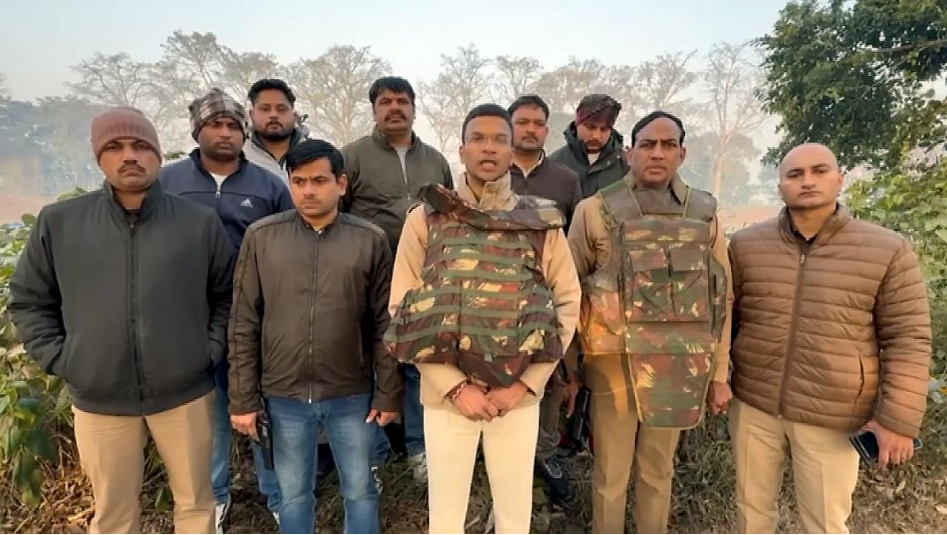1. Introduction
Grenade Attack in Gurdaspur Punjab’s Gurdaspur district witnessed an escalation in regional tensions following a grenade attack linked to the Khalistan Zindabad Force (KZF). In a swift response, the Uttar Pradesh police, in collaboration with intelligence agencies, neutralized three suspected KZF operatives during an intense encounter in Pilibhit. The deceased, identified as Gurvinder Singh (25), Virender Singh alias Ravi (23), and Jaspreet Singh alias Pratap Singh (18),Grenade Attack in Gurdaspur were residents of Gurdaspur. This incident marks another attempt by anti-national elements to destabilize the peace in Punjab and nearby regions.
2. The Gurdaspur Grenade Attack
The grenade attack in Gurdaspur took place near a crowded market, creating panic among residents. While no casualties were reported, the incident underscored the looming threat of terrorism in the region. Security forces responded swiftly to contain the situation and initiated a comprehensive search to apprehend the culprits. Initial investigations pointed to the KZF, an organization associated with Khalistani separatist ideology, Grenade Attack in Gurdaspur as being behind the attack.  For the more information click on this link
For the more information click on this link
3. The Encounter in Pilibhit
Acting on credible intelligence ,Grenade Attack in Gurdaspur police traced the three suspects to Pilibhit in Uttar Pradesh. The operation began late at night as a joint effort between local law enforcement and intelligence units.
- Timeline of the Encounter:
- Security teams surrounded the hideout after confirming the presence of armed individuals.
- Upon resistance, the suspects fired on the officers, leading to an intense gun battle.
- All three suspects were neutralized after several hours.
4. Profiles of the Accused
The deceased individuals were identified as:
- Gurvinder Singh (25): Known for coordinating logistics for KZF operations.
- Virender Singh alias Ravi (23): Acted as a recruiter for KZF, influencing youth in rural Punjab.
- Jaspreet Singh alias Pratap Singh (18): A recently radicalized member tasked with operational assignments.
5. Khalistan Zindabad Force: A Growing Concern
The KZF has gained attention in recent years for attempting to revive separatist sentiments in Punjab. Leveraging foreign funding and local networks, the group remains active in propagating extremist ideologies. Intelligence agencies have warned of its focus on radicalizing the youth and using modern technology to plan attacks.
6. Weapons and Evidence Recovered
During the encounter, police recovered weapons, including semi-automatic firearms, grenades, and propaganda material. A preliminary forensic analysis suggests the grenades used in the Gurdaspur attack matched those recovered from the suspects, linking them definitively to the crime. Digital evidence, including encrypted communication logs, is being analyzed to uncover larger networks.
7. Investigative Leads and Inter-State Coordination
The operation highlighted the significance of inter-state cooperation in combating terrorism. Punjab, Grenade Attack in Gurdaspur Uttar Pradesh, and central agencies collaborated closely:
- Tracing communication and funding trails to external handlers.
- Sharing intelligence inputs about suspected movements across state borders.
- Identifying recruitment hubs targeted by extremist groups.
8. Local Reactions to the Events
The residents of Gurdaspur expressed a mix of relief and concern. While the encounter prevented potential future attacks, Grenade Attack in Gurdaspur the incident served as a chilling reminder of rising militancy. Citizens urged for greater security measures and vigilance.
9. Political Statements and Implications
Political leaders from across the spectrum condemned the attack and reiterated their commitment to preserving peace in Punjab. Some opposition leaders called for stronger measures to counter separatist threats. The encounter has also reignited debates on border security and the role of external influences in fostering terrorism.  For the more information click on this link
For the more information click on this link
10. Role of the Security Forces
Tributes poured in for the bravery and professionalism of the police forces involved in the operation. The encounter has once again demonstrated the capability of Indian law enforcement agencies to neutralize threats efficiently.
11. Combating Radicalization
Experts believe that community-led initiatives are essential to prevent the spread of extremism. Education programs, awareness campaigns, Grenade Attack in Gurdaspur and collaboration with religious leaders can act as preventive measures. Addressing socio-economic challenges is also key to reducing youth susceptibility to radical ideologies.
12. Conclusion
The neutralization of three KZF operatives marks a significant step in safeguarding the region. However, the attack in Gurdaspur serves as a wake-up call, emphasizing the need for ongoing vigilance and robust counter-terrorism strategies. By tackling both immediate threats and root causes, authorities can ensure long-term peace and stability in the region.
13. The Path Forward
The incident highlights the importance of strengthening intelligence infrastructure and fostering inter-agency coordination. In the face of evolving threats, both citizens and law enforcement must remain united against attempts to destabilize the nation. ALSO READ:-Tragedy Over the Red Sea: Two Navy Pilots Killed in Apparent ‘Friendly Fire’ Incident 2024





